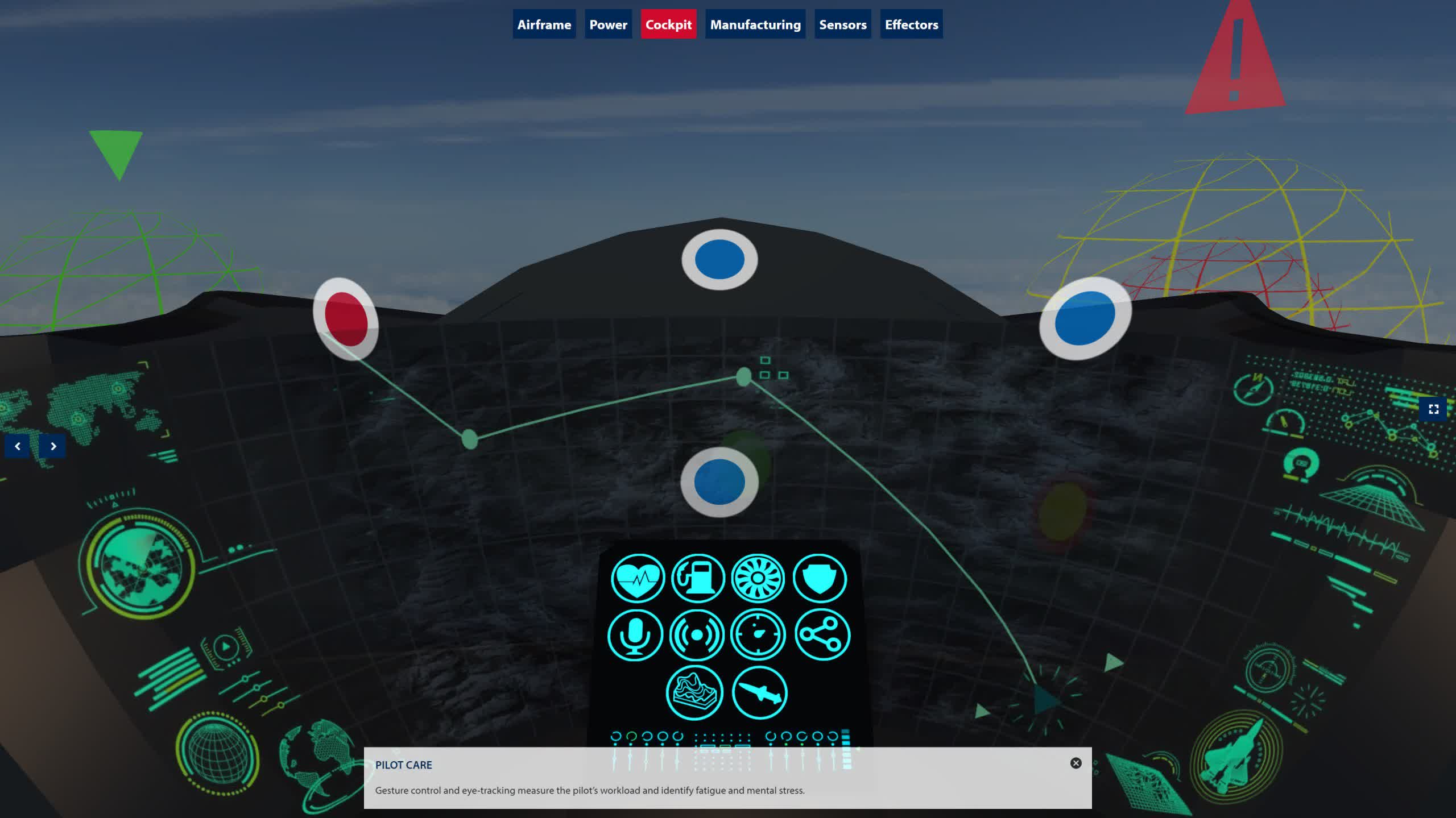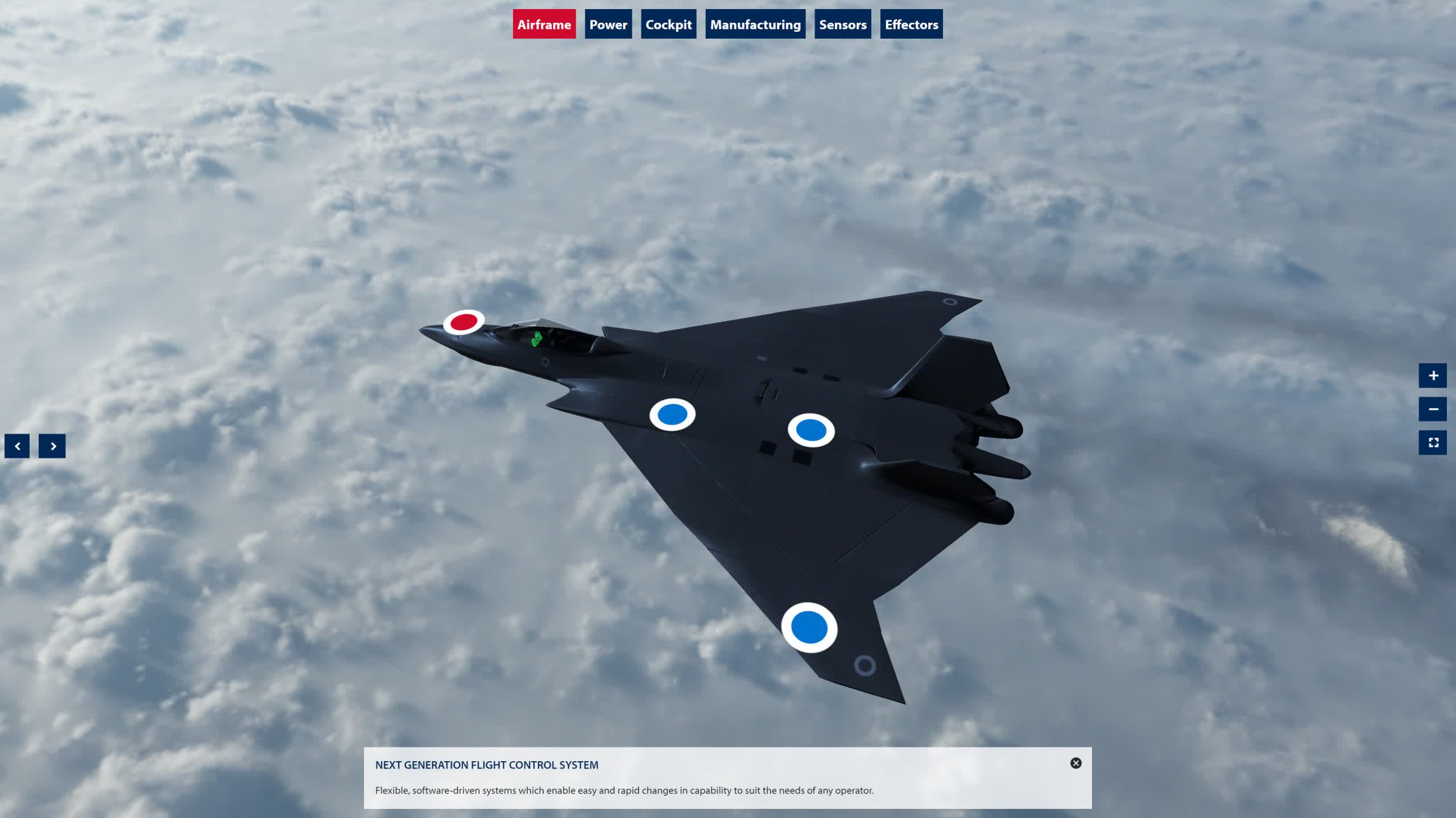Forward-looking: The Royal Air Force's next-generation fighter jet appears designed around some of today's emerging technologies, especially inside the cockpit. The plane's designers plan to incorporate a combination of VR, AR, and AI components in the flight control system.
The Tempest - the United Kingdom's planned fighter jet of the future - will have a cockpit without physical switches or screens. Its systems will also try to "read" the pilots' minds to monitor their condition and make them more aware of their surroundings.
Unmanned and automated drones are becoming increasingly prominent in air-based combat, but the operation of the Tempest will involve a gradient between human and machine control, called "scalable autonomy." According to the BBC, the pilot's helmet will use sensors and AI to analyze brain signals, gradually learning about them. The AI could take control if the pilot is under stress or loses consciousness. The plane will also likely fly alongside drones.

The RAF website outlines cockpit technology using eye tracking to observe the pilot's status, checking for things like fatigue or mental strain. That cockpit's interface will consist of AR and VR controls displayed in the helmet without any physical elements.
The AI, AR, and VR components will use sensors to process vast amounts of data and curate what information reaches the pilot to optimize their situational awareness.
The UK's BAE Systems - one of the companies working on the Tempest - plans to start test flights by 2027. The RAF wants to start deploying the plane by 2035.
